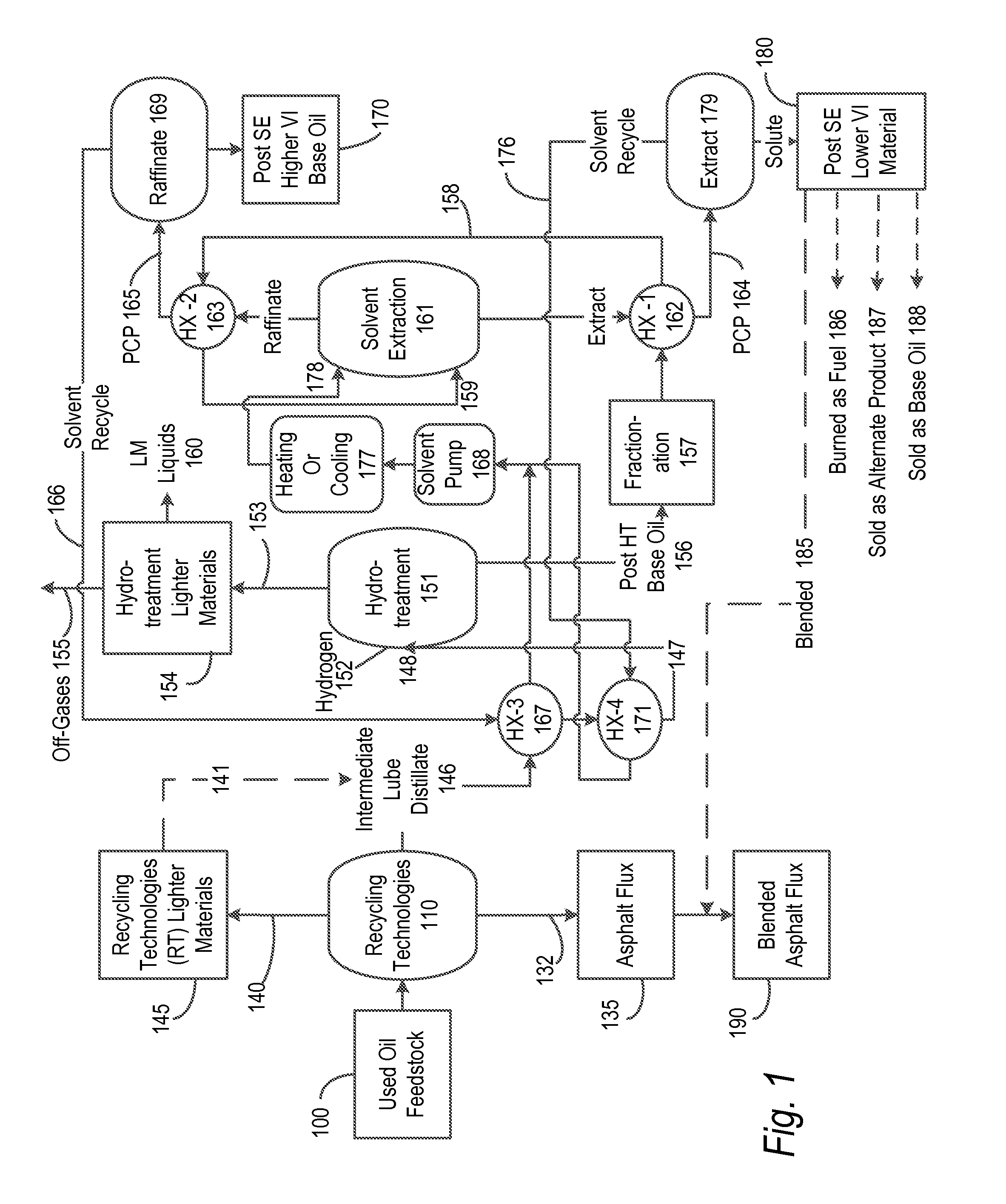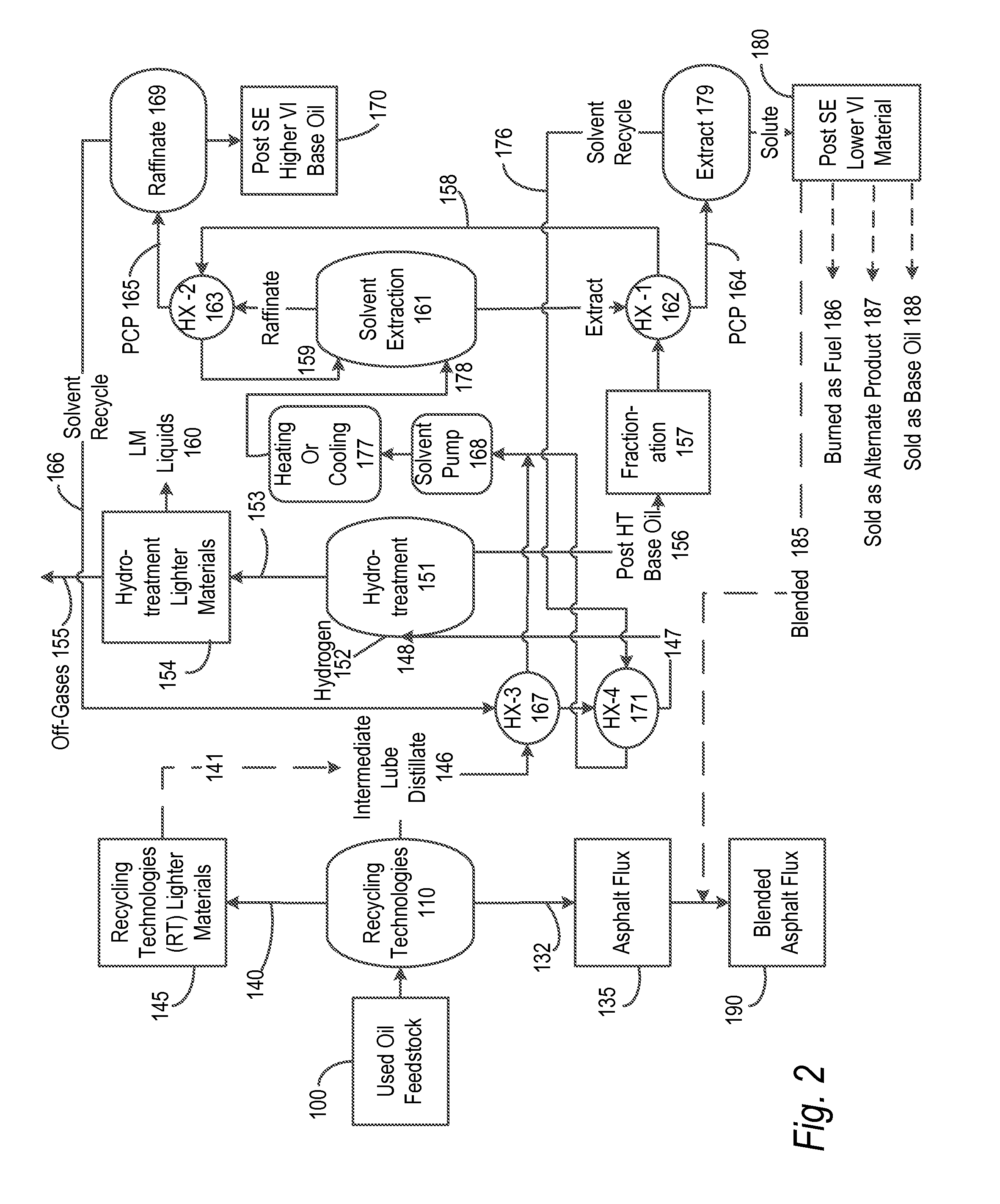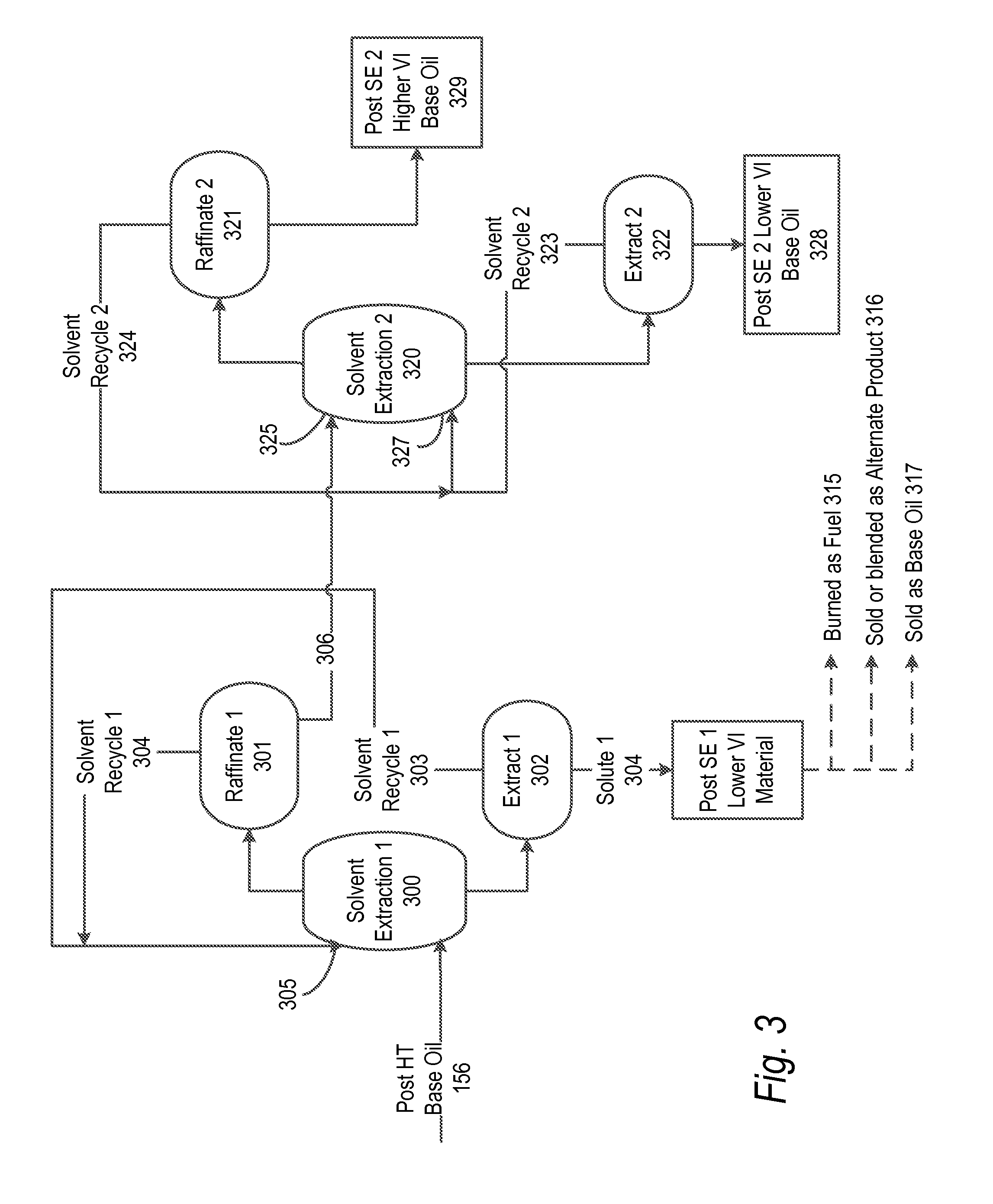In the 1960s, acid / clay treating was prevalent but was discontinued due to extensive by-product solids creation that became ground pollutants, creating many super-fund sites that incurred massive clean-up costs.
The intermediate products (MDO or VGO, which may also be referred to as “intermediate lube distillate”) created by recycling technologies are unfinished and typically unsuited for use as lubricants without further improvement.
However, unlike distillation, solvent de-asphalting will leave relatively high level of metals remaining in the created product.
In the past, re-refined base oil has been viewed as inferior in quality to virgin base oil, although as re-refining technologies have improved, this is no longer accurate.
Most of the smaller, less efficient refineries producing virgin base oil could not justify the capital upgrades and either
shut down their base oil plants within the
refinery, or
shut down the
refinery.
Despite the substantial price premium for Group III, it is generally cost prohibitive to
upgrade existing virgin base oil plants and, in fact, there is currently no refinery (or re-refinery) in the United States producing Group III base oil.
Hydro-cracked base oils, even while exhibiting excellent volatility, anti-oxidation, viscosity response to temperature (
viscosity index or VI), and low temperature characteristics, typically have poor
solubility and
lubricity qualities which then impair the hydro-cracked base oil's ability to be mixed with additives.
In addition hydrocracking results in material yield reductions with up to 40% of the material being lost as a
lubricant.
While hydro-
cracking is employed in many large refineries to make virgin base oils, there are no known re-refineries employing hydro-
cracking because, in the current market, the
capital cost is too high and the yields of lube oil are too low to economically justify the large investment.
However, hydrotreatment is not yet demonstrated to be capable of cost effectively making base oils over a range of viscosities each of which has a 120 VI or more, and most particularly in the lighter viscosities of 100 to 150 SUS, although this may change in later years with continued quality improvement of used oil feedstocks.
For example, there is an upper bound on temperatures above about the 650° F. to 700° F. range where increased
residence time results in increased
cracking and thus yield loss and coking of hydro-treating catalysts.
Below the cracking temperatures,
residence time can be increased (or alternatively stated,
space velocity lowered), but there is a practical limit on results that can be achieved by increased
residence time.
The core challenge of higher pressure hydrotreatment is that when pressure is increased, particularly above 1,500 psig, there is a step change up in capital costs caused by increased cost of materials and construction.
In addition, while certainly producing a 120+VI base oil, the higher pressures and temperatures used in hydrocracking increase cracking and thus increase base oil yield loss and incur more catalyst coking.
However, based on today's typical used oil feedstocks, conventional hydrotreatment is limited in its ability to reduce aromatics and polars, and create higher VI saturates, which generally limits the upper bound VI to below 120 (thus not achieving Group III).
While in some cases with certain feedstocks a higher VI can be achieved for some base oil fractions (more particularly heavy lube oils which tend to have higher VIs to begin with), re-refiners using hydrotreatment have not yet been able to consistently produce Group III base oils across the viscosity range, and thus must depend heavily on obtaining high feedstock quality, which is uncertain and expensive to segregate in most used oil gathering operations.
Thus, based on all currently known operating technologies, it is not economically feasible with current used oil feedstocks to consistently create Group III base oils over a range of viscosities solely by hydrotreatment of used oils.
Solvent extraction can be applied to intermediate lube distillate to make base oil, but there is a low base oil yield as the material which is extracted from the intermediate lube distillate is not marketable as base oil (since it is rich in aromatics and polar compounds, it is a low VI
stream).
Furthermore, and equally importantly, the base oil created using
solvent extraction from the intermediate lube distillate cannot achieve a low enough
sulfur level or sufficient color for many applications.
This loss becomes cost prohibitive since base oil yield losses can exceed 20% to 30%, or even more, of the feed
stream.
Furthermore, the
resultant base oil is generally still too high in
sulfur for the transportation market which is a large, high value market application for lube oil.
Due to its low yield and creation of inferior quality base oil, virtually all new plants targeting higher valued markets have rejected
solvent extraction and instead adopted some form of advanced hydroprocessing.
Clay treatment suffers from a number of issues including low base
oil quality due to high
sulfur and low saturate levels, and some yield loss and
scalability challenges.
However, it is believed that such a process is not feasible for technical or economic reasons and was never commercialized.
While undoubtedly creating a highly improved base oil over what was originally contained in the used lubricating oil feedstock, this process is extremely capital intensive.
However, none of the prior referenced technologies disclose any means or methods whereby
crude oil processing technologies, recycling technologies, or finishing technologies are able to cost effectively achieve consistent production of high quality base oil, whether derived from crude oil, used oil, or a combination thereof.
Blending even small portions of used oils into crude oil incurs high operating risks due to contaminants found in used lubricating oils that are not typically found in crude oils.
 Login to View More
Login to View More 


